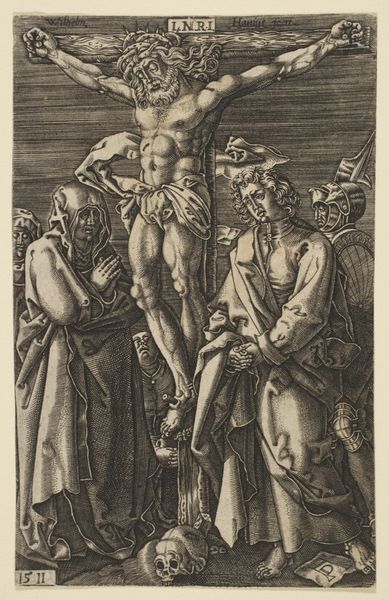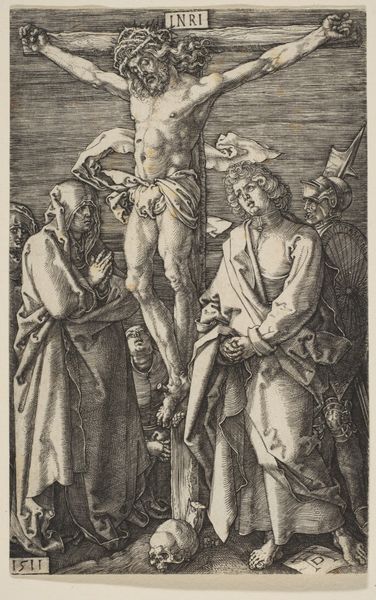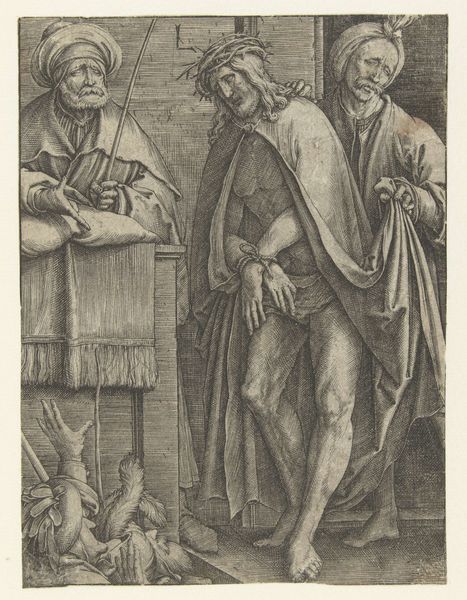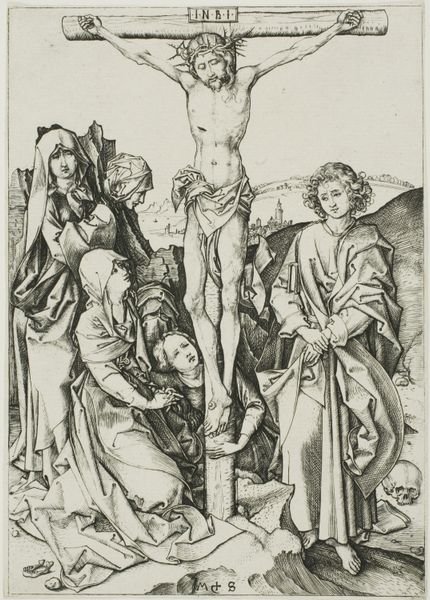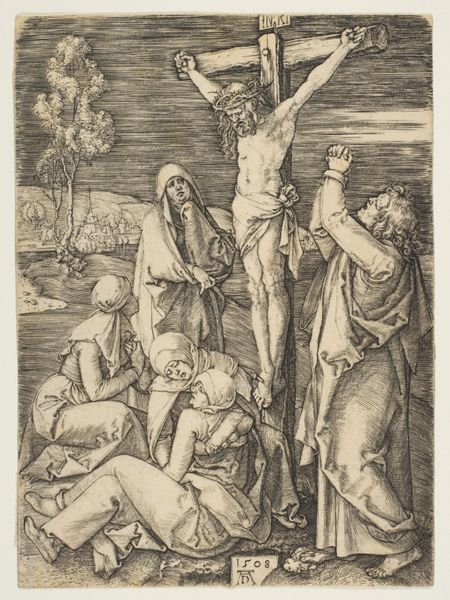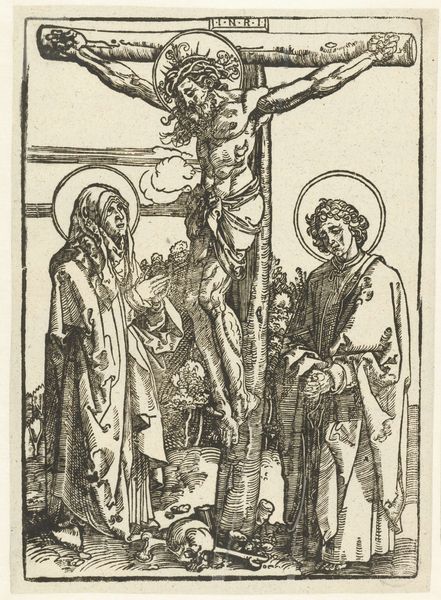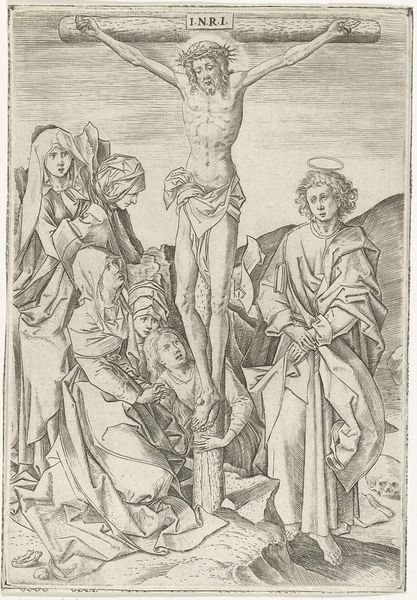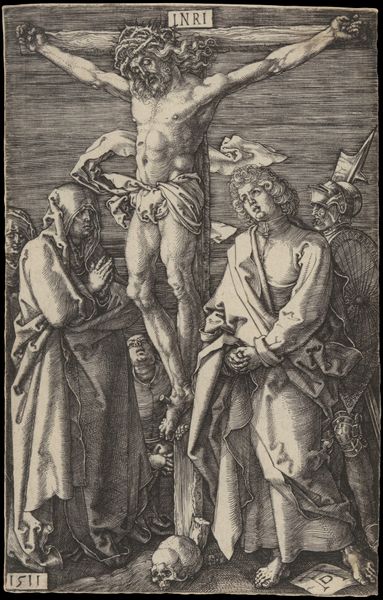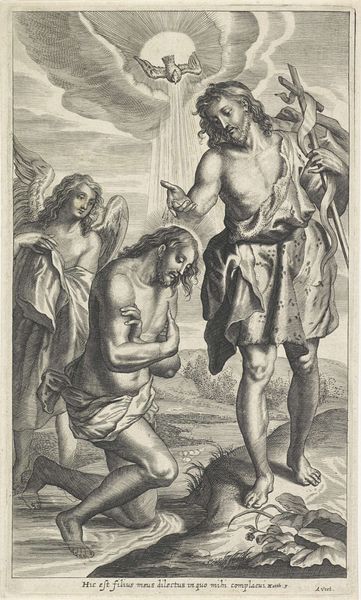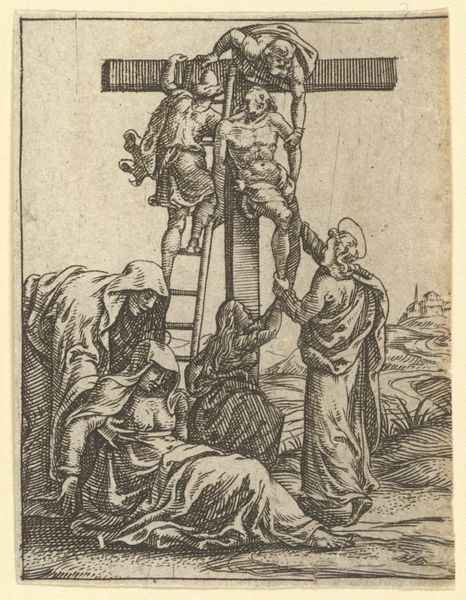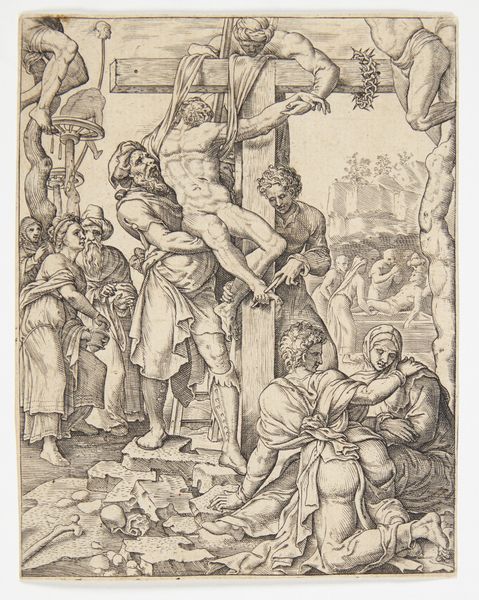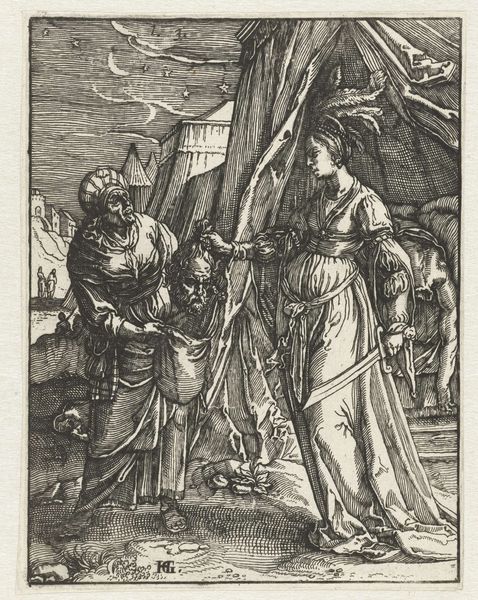
The Crucifixion, from The Passion (reverse copy) 1485 - 1600
0:00
0:00
drawing, print, engraving
#
drawing
# print
#
figuration
#
11_renaissance
#
crucifixion
#
history-painting
#
northern-renaissance
#
engraving
Dimensions: Sheet: 4 15/16 × 2 7/8 in. (12.6 × 7.3 cm)
Copyright: Public Domain
Curator: The print before us, "The Crucifixion, from The Passion," a reverse copy from between 1485 and 1600, plunges into a scene heavy with religious symbolism. Created by Albrecht Durer, we see a classical yet stark example of Northern Renaissance artistry rendered with fine engravings. Editor: Whoa, right from the start, the mood is intense! Even though it's monochrome, the shadows really amp up the drama. I can practically feel the somber atmosphere of that moment. Curator: Precisely! The somberness you feel aligns with established iconographic representations of death and salvation. Notice, for instance, the skull at the foot of the cross, a clear *memento mori*, and consider the expressions etched onto the faces of those around Christ – sorrow, contemplation, and, of course, faith. It suggests the duality of life and death inherent in this imagery. Editor: That skull *is* striking, a real conversation starter, isn’t it? It brings a raw, visceral quality to the otherwise refined engraving. And yeah, you're spot on with the facial expressions—that dude to Jesus’ left, with the long robes, looks so conflicted, almost like he’s weighing everything in that one moment. Curator: Exactly! The figures carry tremendous emotional weight through very deliberate design. This print participates in a rich tradition linking the personal drama of the crucifixion to larger, theological frameworks. Think about the symbolic import, too, the crown of thorns. Durer compels the viewer to dwell on each agonizing detail, imbuing the composition with layers of religious significance. Editor: You know, pondering Durer's vision, it feels deeply personal. This print resonates with centuries of artistic exploration grappling with belief and doubt. I mean, if art doesn’t kick up a bit of inner turmoil, what’s the point? Curator: I agree! It compels viewers to participate emotionally. And what is remembered lives. Editor: That’s pretty much the artistic aim in a nutshell for the ages, right?
Comments
No comments
Be the first to comment and join the conversation on the ultimate creative platform.
